Europe, a continent steeped in history, is not just home to bustling cities and famous landmarks, but also to some of the most enchanting villages that seem to have leaped straight out of a fairy tale.
These hidden gems, nestled in the heart of Europe, offer a glimpse into a world where time slows down, and the charm of the old world lingers in the air. Imagine cobblestone streets winding through picturesque landscapes, framed by mountains or caressed by the gentle waves of serene lakes.
Each village tells its own unique story, with colorful houses, ancient castles, and quaint local markets adding to their magical allure. These postcard-perfect villages are not just a feast for the eyes; they are a sanctuary for the soul. T
hey invite you to experience a different pace of life, one that celebrates simplicity, natural beauty, and the rich tapestry of European culture and tradition.
Step into these fairy tale villages and let yourself be transported into a world of wonder, where each corner holds a new discovery and every moment is a cherished memory in the making.
Postcard-perfect European Villages
1. Colmar, France
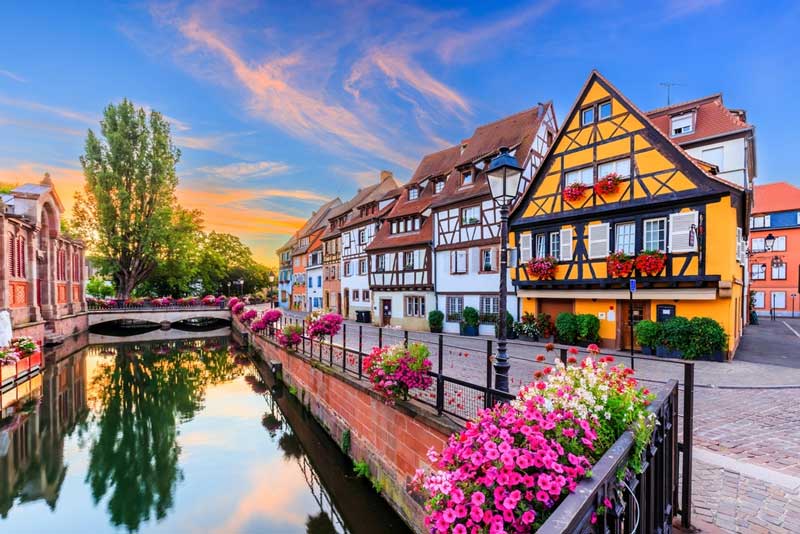
Colmar, France
Colmar, nestled in France’s Alsace region, is a fairy-tale village that captures the heart with its colorful houses and charming streets.
Known for its half-timbered medieval and early Renaissance buildings, Colmar is a living open-air museum that takes visitors back in time. The town’s architecture, with its unique blend of Germanic and French styles, reflects its rich history and cultural heritage.
One of Colmar’s most enchanting areas is “Little Venice”, where picturesque timbered houses line the canals, offering a romantic setting akin to the famous Italian city. The village’s beauty is heightened during the Christmas season, transforming it into a holiday wonderland with its renowned Christmas market.
Colmar is also famous for being the birthplace of Frederic-Auguste Bartholdi, the creator of the Statue of Liberty, and is home to the Bartholdi Museum. The wine culture is prominent here, with the region specializing in white wines like Riesling and Gewürztraminer.
2. Tellaro, Italy
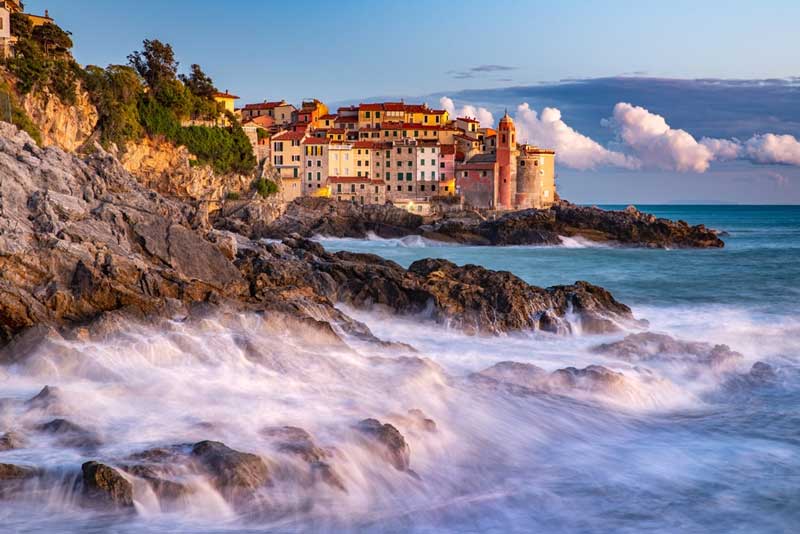
Tellaro, Italy
Tellaro, a picturesque fishing village on the east coast of the Gulf of La Spezia in Liguria, northern Italy, is a hidden treasure that exudes an enchanting aura. This village, part of the Lerici municipality, is celebrated as one of “The most beautiful villages of Italy.”
It’s a place where artists and writers have found solace and inspiration, including the Italian poet Mario Soldati who made it his home. Tellaro’s charm is evident in its narrow streets lined with traditional Ligurian houses, and its famous pastel-pink Church of San Giorgio, perched right by the sea.
This church is not only a spiritual haven but also a historical landmark with a legend about a giant octopus warning the villagers of a pirate attack by ringing the church bells.
Tellaro’s unique underwater Christmas celebration, where a statue of baby Jesus is brought up from the sea, adds to its mystical allure. The absence of mainstream tourism here allows for a serene experience, where one can enjoy the authentic Italian coastal life.
3. Hallstatt, Austria
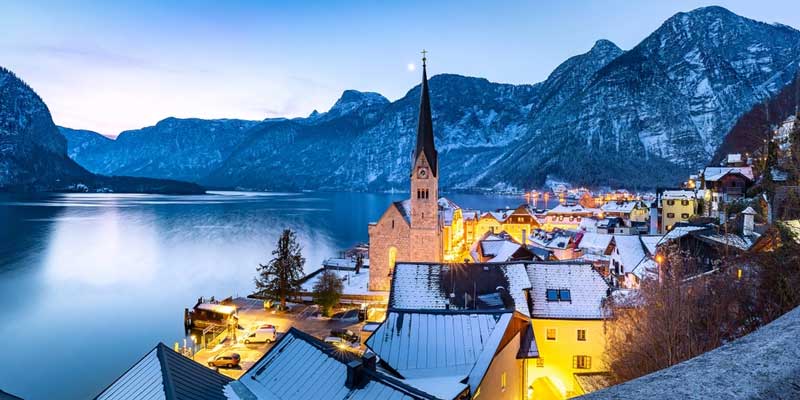
Hallstatt, Austria
Hallstatt, nestled in Austria’s Salzkammergut region, is a village that seems lifted straight from a storybook. Revered as the ‘Pearl of Austria’, this UNESCO World Heritage Site captivates visitors with its blend of natural beauty and rich history.
Hallstatt’s past is deeply intertwined with salt mining, dating back to the Bronze Age, contributing to its cultural significance. The village offers an array of attractions, such as the ancient salt mines and a charming old town lined with gingerbread-like houses and cozy lanes.
One can’t miss the striking Hallstatt Lake (Hallstätter See), surrounded by steep mountains, resembling a Norwegian fjord. For those seeking a panoramic vista, the World Heritage Skywalk stands about 350 meters above the village, offering a breathtaking perspective.
Hallstatt’s proximity to Dachstein, the tallest mountain in the area, makes it a haven for outdoor enthusiasts. Here, one can indulge in activities like hiking, paragliding, and exploring the Giant Ice Cave.
The town’s charm extends to its unique ossuary, housing over 1,000 painted skulls, a testament to the local burial traditions shaped by limited space due to the surrounding mountains and lakes.
4. Folegandros, Greece
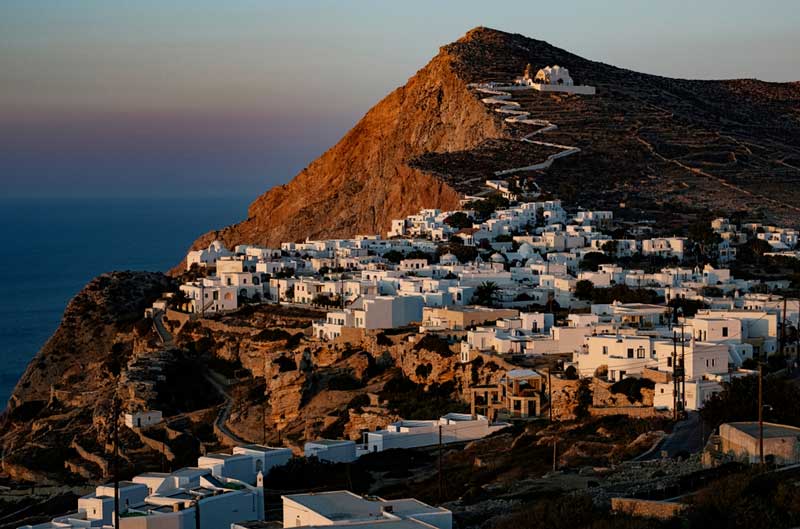
Folegandros, Greece
Folegandros, a hidden gem in the Cyclades, Greece, exudes an enchanting charm with its unspoiled beauty and tranquil pace. This picturesque island, once a well-kept secret, captivates with its rugged landscape and traditional Cycladic architecture.
The main town, Hora, is perched on a clifftop, featuring whitewashed houses, narrow alleys, and colorful windows, creating a scene straight out of a postcard. The medieval Kastro in Hora, with its white clay-like houses and vibrant colors, is particularly captivating.
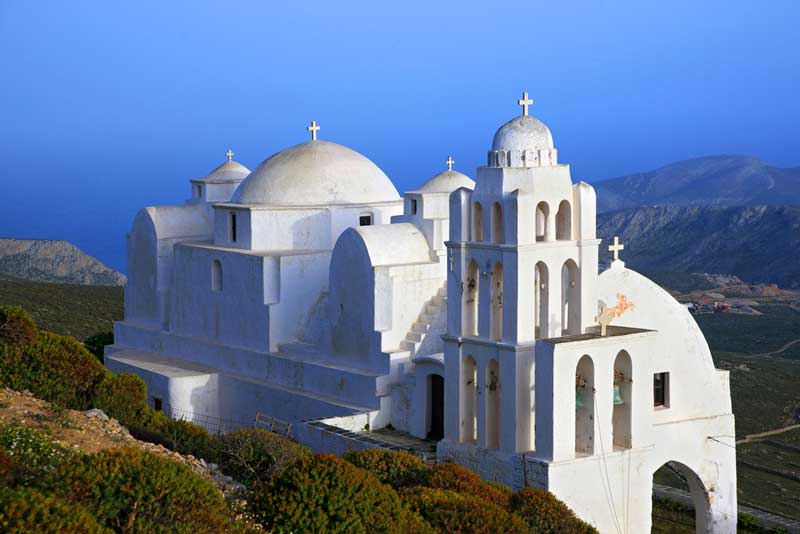
The church of Panagia, Folegandros
For breathtaking views, the climb to the Church of Panagia is a must. This church, a symbol of Folegandros, offers panoramic vistas of the Aegean Sea.
The serene beaches like Angali and Ambeli, with crystal-clear waters, add to the island’s allure. Folegandros remains an ideal destination for a relaxing holiday and a starting point for exploring the Cyclades islands.
5. Bibury, England
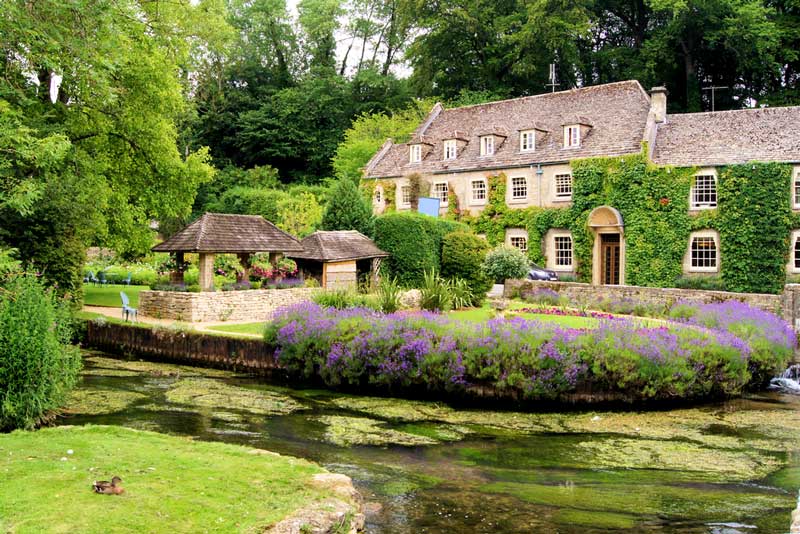
Bibury, England
Bibury, a picturesque village in Gloucestershire, England, is often regarded as the epitome of English countryside charm. Celebrated by William Morris as “the most beautiful village in England”, Bibury captivates with its historic Arlington Row.
These iconic cottages, originating from the 14th century as a wool store and later transformed into weavers’ cottages, represent the quintessential Cotswold style. The River Coln, meandering through the village, enhances its scenic beauty, particularly alongside the famous Arlington Row, making it a photographer’s delight.
St Mary’s Church, dating back to the 8th century and a Grade I listed building, adds to the village’s historical allure. With its Saxon gravestone, Norman doorway, and medieval stained glass, the church is a testament to England’s rich architectural heritage.
The Bibury Trout Farm, amongst the oldest in the country, offers an interactive experience with nature. Despite its quaint size, Bibury’s allure brings in numerous visitors, seeking a slice of this idyllic English village life.
6. Reine, Norway
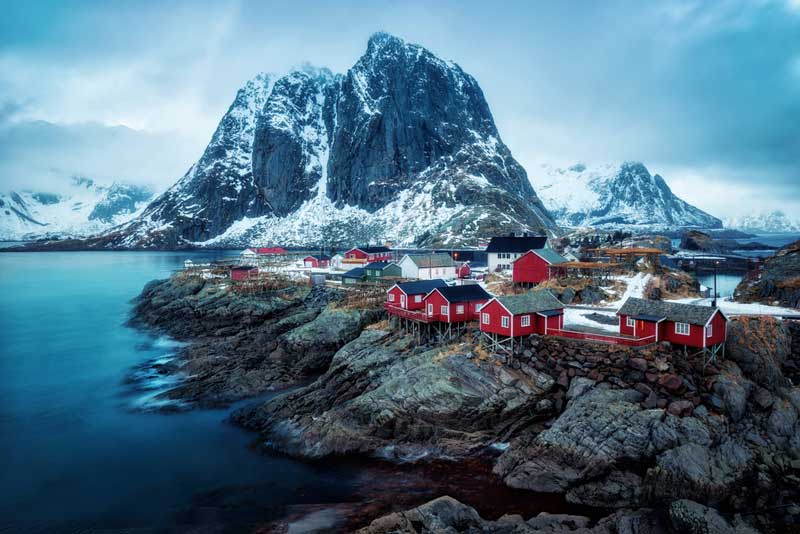
Reine, Norway
Reine, a small yet breathtaking fishing village in Norway’s Lofoten archipelago, is celebrated for its dramatic natural scenery. Reine is nestled on the island of Moskenesøya and hovering above the Arctic Circle.
The destination is defined by its traditional red and white fishermen’s huts, known as rorbuer, dotting the shoreline. Backdropped by towering granite peaks and the serene Reinefjorden, the village’s beauty is almost surreal.
In addition to its stunning landscapes, Reine is a hub for outdoor activities. Hiking enthusiasts often trek up the Reinebringen mountain for panoramic views, while kayaking and deep-sea fishing are popular in the surrounding waters. The village also serves as a prime spot for witnessing the mesmerizing Northern Lights.
Despite its remote location and small population, Reine attracts numerous visitors each year, drawn by its picturesque setting and cultural richness.
7. Telč, Czech Republic
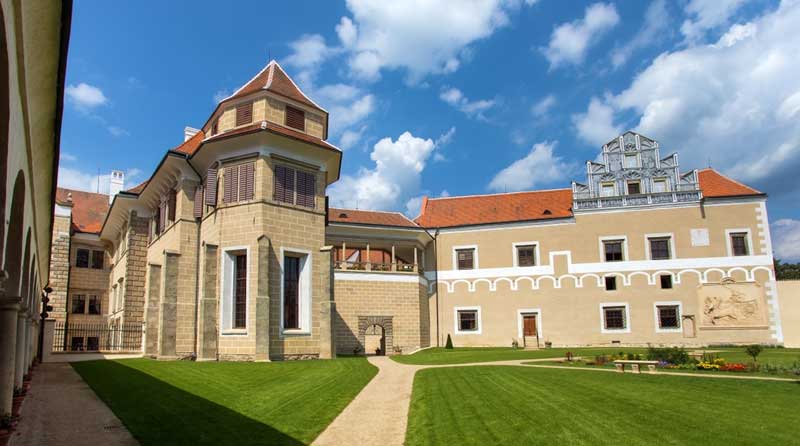
Telč, Czech Republic
Telč, a town in the Czech Republic’s Vysočina Region, is a fairy-tale destination straight from a storybook. Renowned for its beautifully preserved historical center, Telč is a UNESCO World Heritage Site, recognized for its unique urban monument reservation.
The town’s charm is epitomized by its picturesque triangular market square, encircled by Renaissance and Baroque houses with distinctive high gables and arcades, each flaunting intricate and unique façades.
The centerpiece of Telč is its 17th-century Renaissance château, complete with an English-style park and a captivating Chapel of All Saints. The château also hosts a museum displaying ethnographic, historical, and archaeological collections. This architectural jewel reflects Italian art influences, adding to the town’s enchanting atmosphere.
Telč’s history, dating back to the 14th century when it was rebuilt in stone after a devastating fire, contributes to its allure. Surrounded by artificial fishponds that once served as defense mechanisms, the town offers a serene and picturesque setting, perfect for exploring its rich cultural heritage.
8. Albarracín, Spain
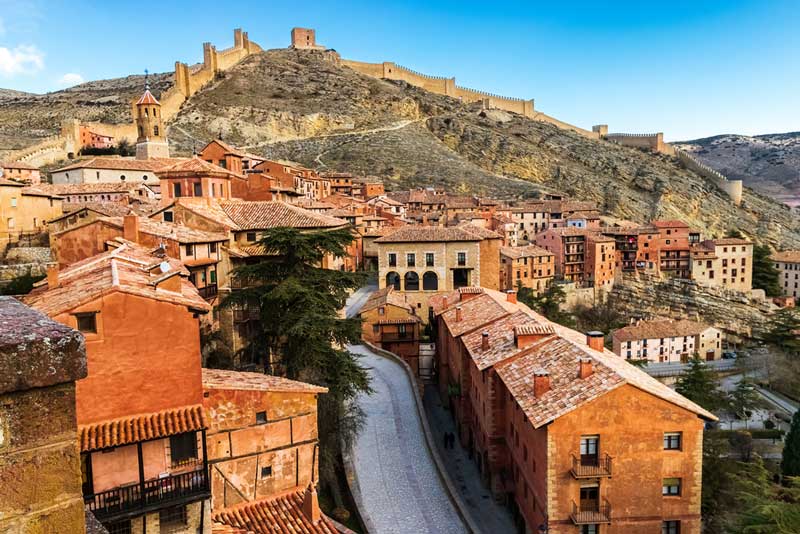
Albarracín, Spain
Albarracín, a village in Spain’s Aragon region, is a picturesque embodiment of medieval charm. Perched on a cliff above the Rio Guadalaviar, this village boasts a unique pink hue due to the local stones and materials used in its construction.
The narrow, cobbled streets wind up the hill, lined with tall, balconied medieval houses, leading to a castle that offers stunning views of the surrounding National Park and Universale Mountains.
The village is known for its well-preserved medieval defensive walls and the Cathedral of El Salvador, a Roman Catholic church with a rich treasury.
The central Plaza Mayor, along with the Bishops Palace and the Dolz del Espejo, adds to the allure of Albarracín, making it a must-visit for those who appreciate historical architecture and picturesque settings.
9. Pučišća, Croatia
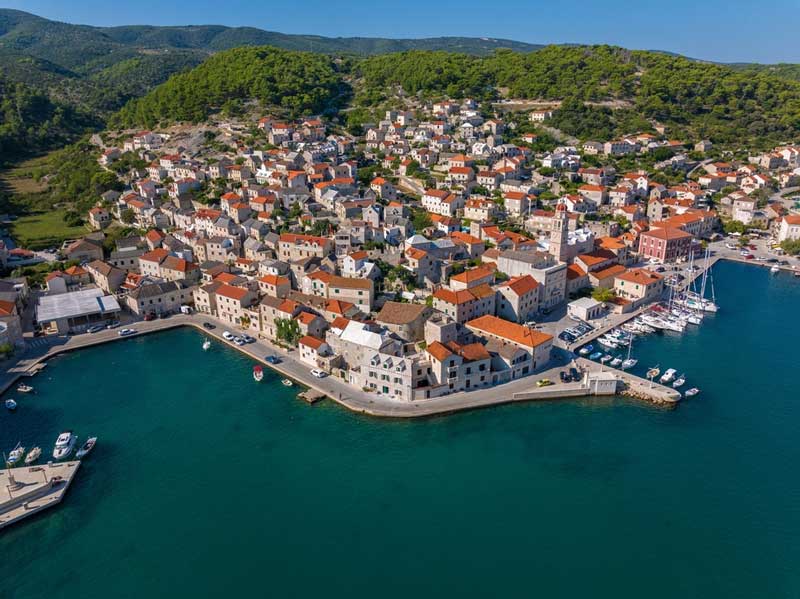
Pučišća, Croatia
Pučišća, a village on Croatia’s Brač Island, is a picturesque marvel. Renowned for its white limestone, the village’s architecture is a testament to its long-standing stone masonry tradition.
This craftsmanship is evident in its beautiful stone buildings, including the Parish Church of St. Jerolim and the historic Pučišća stone quarry. The village’s cultural life is vibrant, hosting the Pučišća Summer Festival with an array of concerts and exhibitions.
A walk through its streets reveals a blend of Mediterranean architecture with stone facades, red-tiled roofs, and traditional wooden shutters, offering a glimpse into its rich heritage and architectural beauty.
10. Cong, Ireland
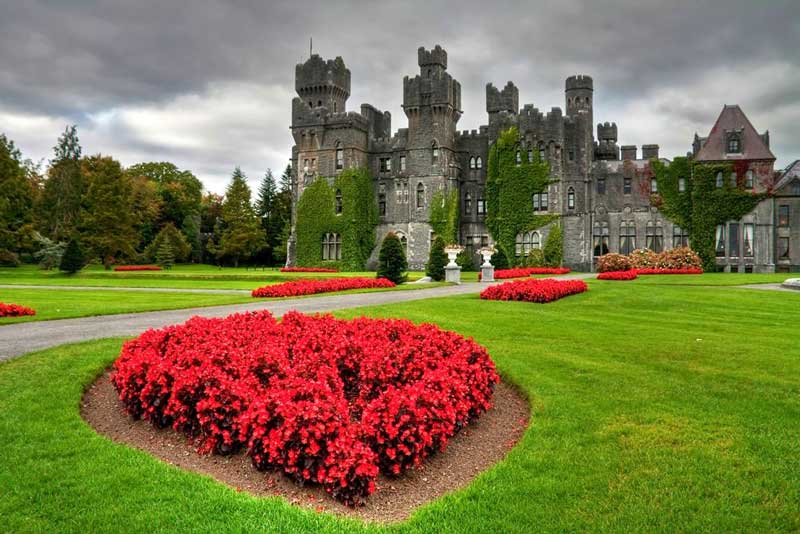
Cong, Ireland
Cong, a quaint village in County Mayo, Ireland, radiates a unique historical allure. Best known as the filming location for “The Quiet Man”, Cong is nestled between the scenic Lough Corrib and Lough Mask. Its rich history is visible in the 12th-century Cong Abbey and the legendary Ashford Castle.
The village is a gateway to outdoor activities, including lake cruises, woodland walks, and falconry. Cong’s heritage trail and numerous historical sites make it a charming destination, blending cinematic fame with timeless Irish beauty.
The village’s serene setting and rich cultural tapestry make it a must-visit for travelers seeking an authentic Irish experience.
11. Gruyères, Switzerland
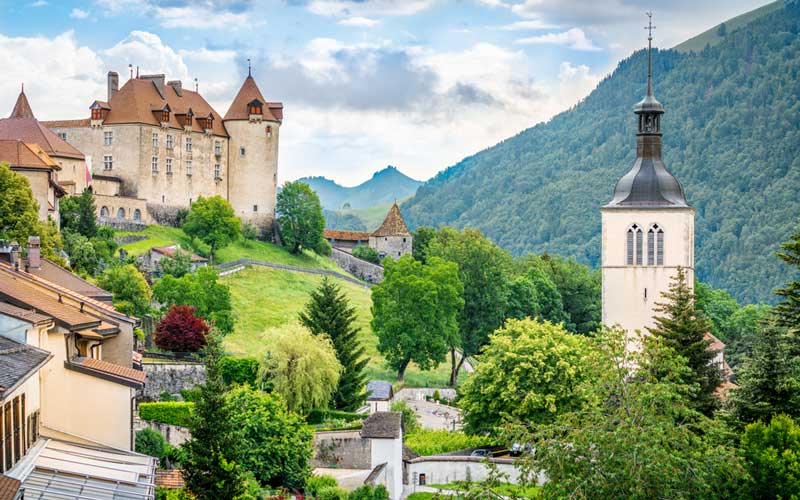
Gruyères, Switzerland
Gruyères, a medieval town in Switzerland, is a fairy-tale village straight out of a storybook. Perched atop a hill in the Fribourg alps, Gruyères is known for its namesake cheese, Le Gruyère AOP. The 13th-century Castle of Gruyères dominates the town, showcasing its medieval past.
The pedestrian town, with its charming cobblestones and fountains, invites visitors for a leisurely stroll. It’s surrounded by the prealps, offering breathtaking hikes, including the Gastlosen Tour with its sweeping views.
Gruyères is a cultural haven, featuring museums like the HR Giger Museum and the Tibet Museum, alongside the cheese demonstration at La Maison du Gruyère.
12. Bled, Slovenia
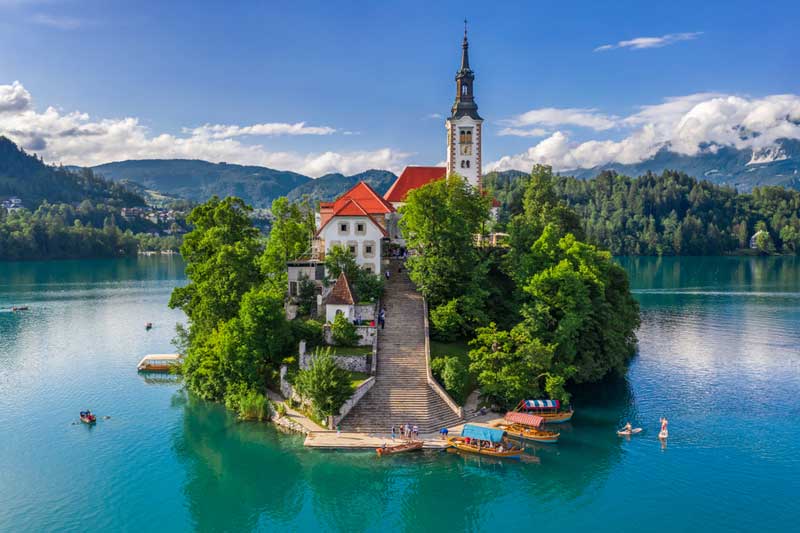
Bled, Slovenia
Bled, Slovenia, is a fairy-tale-like destination that epitomizes the charm of European villages. Known for its stunning glacial Lake Bled, this town is nestled in northwestern Slovenia and boasts an array of natural and cultural attractions.
Dominating the lake is Bled Castle, perched on a high cliff, offering breathtaking views. A unique feature of Bled is the Church of the Mother of God on the Lake, located on a small island in the lake, accessible by a traditional pletna boat. Climbing the 99 steps to the church and ringing the wishing bell is a cherished tradition.
Bled is also famous for its thermal springs, which are used in indoor pools at local hotels, providing a relaxing experience for visitors.
For outdoor enthusiasts, Bled offers various activities like golfing at the Royal Bled Golf, one of the oldest and largest courses in Slovenia, and hiking trails leading to Ojstrica and Mala Osojnica for iconic panoramic views. Winter transforms Bled into a magical landscape, ideal for ice skating on the frozen lake.
The culinary scene in Bled includes the famous Bled cream cake, a delightful treat for visitors, among other local delicacies.
13. Óbidos, Portugal
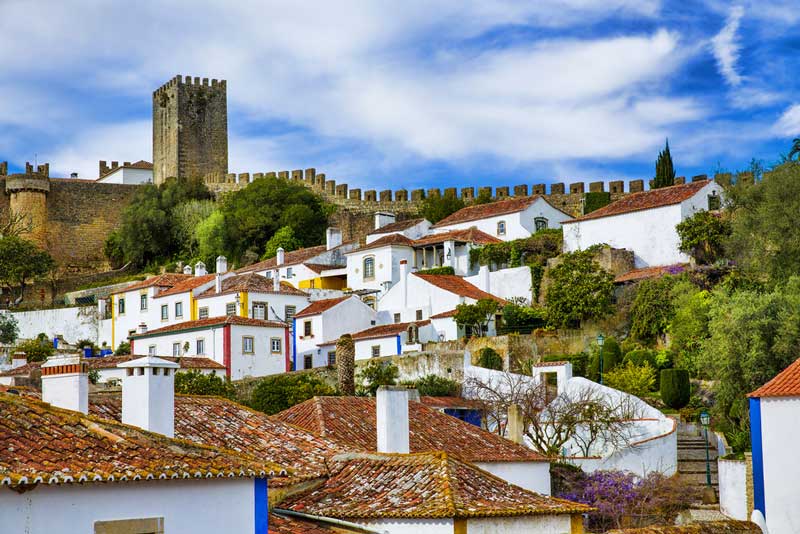
Óbidos, Portugal
Óbidos, a captivating medieval village in Portugal, is like stepping into a storybook. Known as “The Wedding Present Town,” it was a gift from King Dinis to Queen Isabel in 1282.
This enchanting town is encircled by a fortified wall and features a maze of cobbled streets lined with traditional white houses, often adorned with bright flowers. The Castle of Óbidos, dating back to the 8th century, now serves as a luxurious hotel and offers stunning views from its walls.
One of Óbidos’ unique experiences is sampling Ginja d’Óbidos, a traditional sour cherry liqueur, often served in edible chocolate cups. The town also boasts several historic churches, like the Church of Saint Mary and the Igreja da Misericordia de Obidos, each with unique charm and intricate interiors.
Óbidos hosts various popular festivals, including the Chocolate Festival in spring and the Medieval Fair in summer, adding to its vibrant atmosphere. Although small and can be explored in a day, staying overnight is recommended to fully immerse in its magical ambience.
14. Cochem, Germany
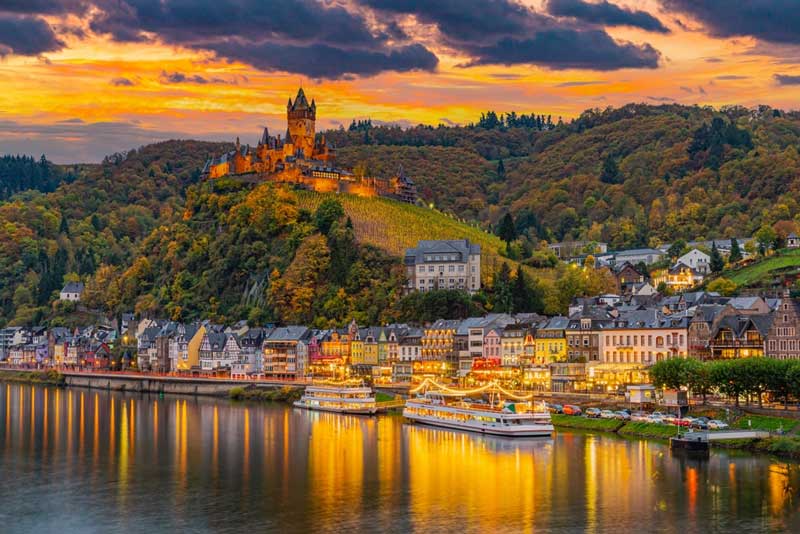
Cochem, Germany
Cochem, a picturesque village in Germany, is a true embodiment of a fairy-tale setting. Situated along the Moselle River, this medieval town is renowned for its towering Reichsburg Castle. The Castle is a symbol of the town’s rich history and a testament to its resilience through various historical challenges, including wars and plagues.
The Altstadt (Old Town) of Cochem captivates visitors with its charming half-timbered buildings and vibrant market square, buzzing with cafes, restaurants, and shops, offering a glimpse into the town’s cultural fabric.
The Mosel Wine Festival, celebrated annually, showcases the region’s famous Riesling wines, reflecting Cochem’s strong wine heritage. The Mosel Valley, with its vineyard-clad hills, provides a stunning backdrop to this quaint village, enhancing its postcard-worthy appeal.
Exploring Cochem offers various activities, from hiking scenic trails to cruising along the Moselle River, capturing the essence of this enchanting region.
15. Banská Štiavnica, Slovakia
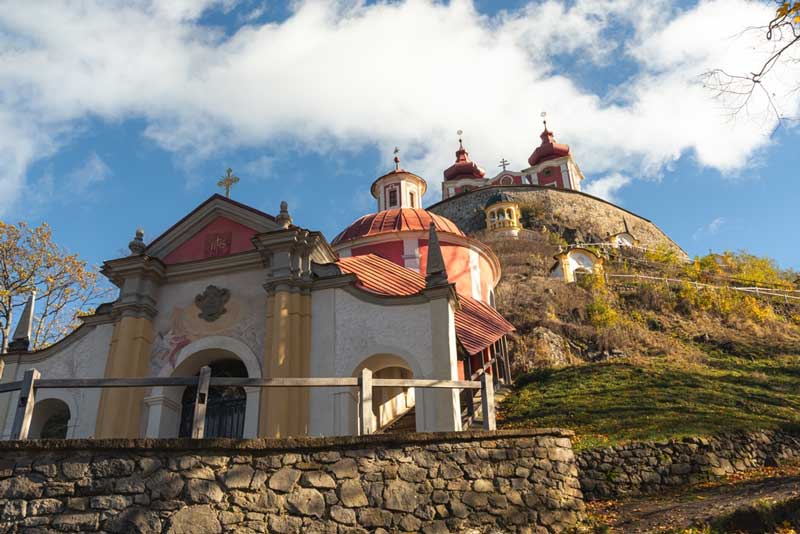
Banská Štiavnica, Slovakia
Banská Štiavnica in Slovakia is a historical gem that seems lifted from a fairy tale. Rooted in its rich mining heritage, particularly silver, this town dates back to the Neolithic period.
Recognized by UNESCO for its blend of urban architecture and industrial landscape, the town’s medieval roots have evolved into a mix of Renaissance and Gothic structures. Highlights include the Old and New Castles, showcasing the town’s defensive past and turbulent history.
The town is also known for its innovative mining techniques, including the use of gunpowder in mines and a unique water management system. Banská Štiavnica’s charm is further accentuated by its picturesque streets, cozy cafes, and a vibrant cultural scene, making it an enchanting destination steeped in history and beauty.
Final Thoughts
Europe’s fairy-tale villages offer a mesmerizing journey into a world where time stands still, and charm overflows. Each village is a unique tapestry of history, culture, and natural beauty.
These postcard-perfect villages, steeped in tradition and folklore, are not just travel destinations; they are vivid reminders of Europe’s rich and diverse heritage, offering an escape into a realm of enchantment and tranquility.
